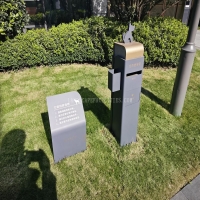Welcome to the website for landscape facilities products and knowledge.
How do landscape bar counters cater to different cultural preferences in global markets?
The integration of landscape bar counters into global hospitality venues represents more than just a design trend—it signifies a nuanced approach to accommodating diverse cultural expectations. These fluid, organic structures serve as social hubs that must resonate with local customs, social behaviors, and aesthetic values across different markets.
In Western cultures, particularly in North America and Europe, landscape bars often emphasize open sightlines and flexible seating to encourage social mingling. The designs typically feature longer stretches of counter space with minimal barriers, reflecting cultures where casual interaction between strangers is commonplace. Materials like polished concrete, reclaimed wood, and metal accents dominate these settings, aligning with contemporary industrial aesthetics favored in these regions.
Conversely, Asian markets demonstrate distinct preferences that shape bar counter design. In Japan, where drinking culture emphasizes intimate group dynamics, landscape bars might incorporate subtle dividers or lowered sections that create semi-private zones within the larger counter. The use of natural materials like bamboo, stone, and dark woods reflects traditional aesthetic values, while precise craftsmanship mirrors cultural appreciation for artistry.
Middle Eastern venues often require adaptations for cultural sensitivities. Landscape bars in these markets might incorporate more substantial visual barriers or separate sections for different clientele groups. Design elements frequently feature intricate patterns, gold accents, and luxurious materials that align with regional preferences for opulence while maintaining functional separation between spaces.
Latin American establishments typically embrace vibrant social atmospheres, leading to landscape bars designed as central gathering points. These often feature brighter colors, locally sourced natural materials, and integrated elements like small dance floors or music areas that reflect the region's festive social culture. The counters themselves might be broader to accommodate group servings and shared drinking experiences.
Temperature preferences also influence design choices. In warmer climates, landscape bars might incorporate outdoor extensions, cooling materials like tile or stone, and open-air concepts. Colder regions often feature built-in heating elements, warmer materials like leather and dark woods, and more enclosed configurations that retain warmth and create cozy atmospheres.
The height and seating arrangements at landscape bars vary significantly across cultures. Northern European countries often prefer higher seating that promotes quick drinking and socializing, while Mediterranean cultures might favor lower, more relaxed seating that encourages lengthy gatherings. These differences directly impact the counter's structural design, with variations in footrest placement, knee space, and overall ergonomics.
Lighting integration demonstrates another cultural adaptation. East Asian venues often feature softer, indirect lighting that creates tranquil atmospheres, while American sports bars might incorporate brighter lighting and multiple television screens. The landscape bar's design must accommodate these technical requirements while maintaining its aesthetic integrity.
Ultimately, successful implementation of landscape bar counters in global markets requires designers to balance aesthetic appeal with deep cultural understanding. The most effective designs serve as cultural translators—physically embodying social customs, historical references, and contemporary preferences through their form, function, and materiality. This cultural sensitivity transforms the bar counter from mere furniture into a meaningful element that resonates with local patrons while maintaining its distinctive design identity.
Related search:

Recommendation
Outdoor cat and dog feces trash can; Community pet trash can; Metal multi-color design